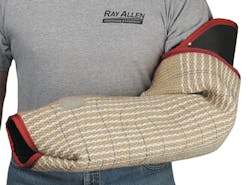Handler Protection & Subject Apprehension Pt. 1
When we are training a person, we are able to sit down and explain and demonstrate what we are trying to accomplish, and with repetition, that person will get it. With a canine, it is a whole new ball game, and being a trainer or handler isn’t for everyone. Anyone can be a dog owner, just as anyone can be a parent, but not all should be. When it comes to the simple house pet, it is fairly simple, get the dog house broken and trained for basic obedience. Most, but not all pet owners can handle this. If your pet dog is playing and you tell them to “Stop”, “NO”, whatever, and they don’t do it, well usually it isn’t a big deal, unless their safety or someone else’s is in jeopardy. In regards to a working canine, every command given must be obeyed, especially one that is trained for bite work.
I firmly believe in the reward system during training, whether that is a ball, pats on the head, praise, chew rope, or combination of rewards. In early stages of training or for pet dogs, I can see using food as a reward before you have developed their drive, but I’m not a big fan of it for long term use.
I look at bite work as advance obedience, so your basic obedience should be firmly in place before you start bite training. That means that your canine should come, sit, down, stay, heel, etc., every time given the command without hesitation. If not, the basics need to be worked on. You are setting the foundation for everything else to come. Just like a house, you need a rock solid foundation, otherwise things will fall apart.
I mentioned in a previous article “Canine Socialization is Important”, that bite/apprehension work should be like turning on and off a light switch. To get a canine to that level, takes a significant amount of training, but it is the way it should be. When you give your partner the “out” or “heel” command, that is what they should do, not continue biting the suspect. If a canine continues to bite or bites when it shouldn’t can and will probably lead to an excessive use of force lawsuit. This also includes calling your partner off before the bite happens.
When we fire our weapon, we cannot call that bullet back, but we can call our canine partner back. Say for instance you are confronting a suspect and they are not complying with commands, and it is deemed necessary to deploy the canine for apprehension. You deploy your canine and before the canine gets to the suspect, the suspect complies. That is your cue to call off your partner. I haven’t seen many canines or handlers trained as I have described.
Here’s a short story for you; I was working with a canine trainer that trained in this method. If I hadn’t already known him and trusted him like I did, I probably would have had streaks in my pants. He told me to stand still. He brought out his canine, and from about 30 feet away, he gave the bite command. I was still a bit nervous about having this canine charging at full speed, but I stayed still. When this canine was about 5 feet away, he gave the “heel” command. The canine stopped, spun around and returned just as fast to the heel position. Once at the heel position, he was still watching me very closely, but wasn’t barking, snarling or anything. That demonstration was very convincing. I have seen many canines that are so hyped up to get the bite and hyped up after the bite; that it takes several minutes to get them to calm down. I know that some of you are thinking or saying, “That is the drive,” but that drive must be controlled through training.
Any experienced canine trainer knows how to develop the bite, but we shouldn’t be so focused on it that we forget the basics. I believe the best canines are the ones that we train from an early age; little to know problems to overcome, like poor training. Once basic obedience is well underway and the canine is picking it up well, we can start to introduce some bite work. That bite work would be playing with a tug toy. As we are using that tug toy, we are introducing the “bite” and “out” command. As the canine picks this up, we start introducing other commands.
After a short period of time, the canine is biting and outing on command, along with any other commands you have introduced. As the canine starts getting bigger, you can start increasing the size of the item being bit. For instance a fire hose tug or puppy bite pillow. These are good tools to start building a strong full-mouth bite. But don’t be too rush through the process. Allow your canine to develop physically. Although it slightly shortens the service life, I don’t believe a canine should be taken beyond this point of bite training until at least 6 months of age, preferably one year of age.
Once they are of recommended age and the introductions to bite works is perfect, then start with the soft sleeves. Again, don’t rush it and go right to the hard sleeve. As you work through the process of developing the bite and progress to other types of sleeves, keep working all the commands into it. The canine shouldn’t be biting the toy, bite pillow or sleeve until they get tired. Give them the bite, and vary the length of time before you give the “out” command.
I will continue this discussion next month with part 2.
Stay Safe!

Steven Forgues
Steve Forgues started his career over 18 years ago in Arizona. Over the years, Forgues has worked contract security, police, corrections and tactical operations. Forgues has been an instructor in various disciplines since 1998, and has been working and training with canines since 2000. Forgues has also been writing for law enforcement since 2005. He is currently working as a police officer and firefighter in Pennsylvania.



